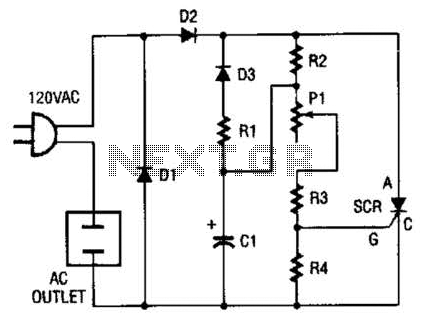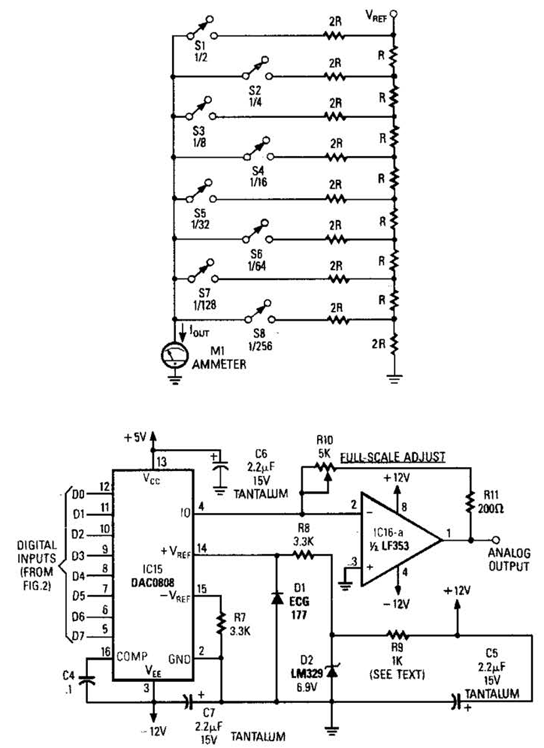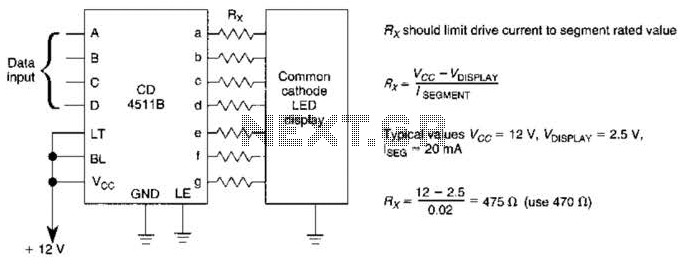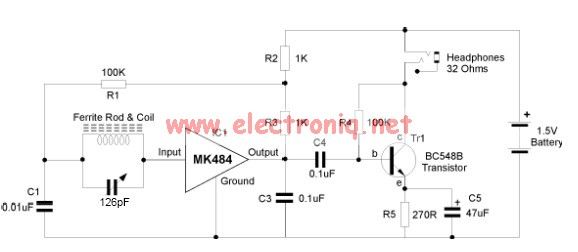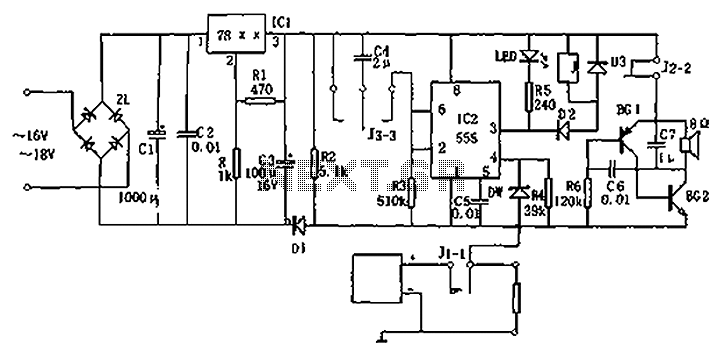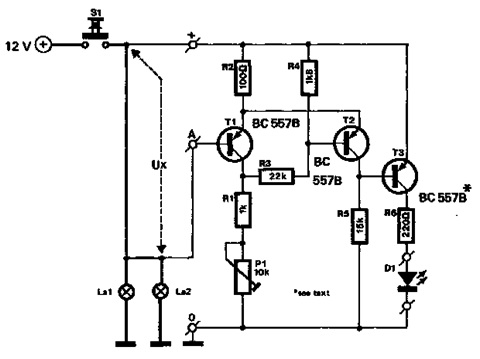
A read-only phase sequence indicator circuit
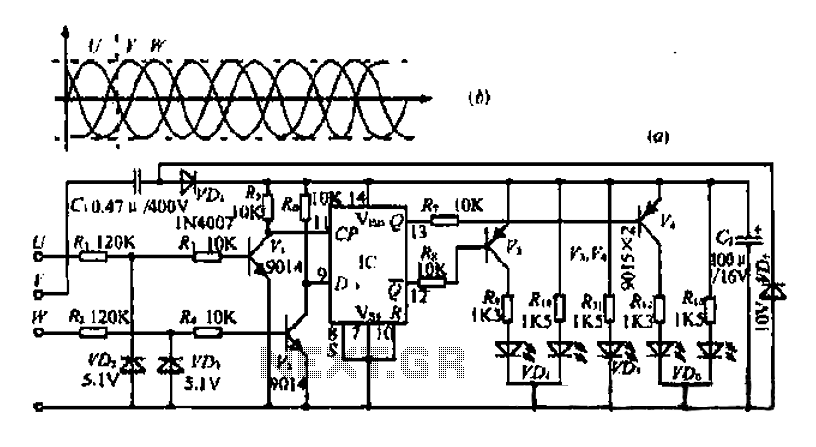
The three-phase voltage waveform diagram illustrates that when one phase voltage transitions from positive to negative across the zero point, the subsequent phase voltage becomes positive while the third phase remains negative. The U terminal voltage is positive when steady pressure is applied, causing diodes VD2 and VD3 to conduct, while H and V2 are activated. When the U terminal voltage crosses from positive to negative, the voltage at VD2 decreases to zero, turning off H. This results in a rising edge pulse signal at the clock input of the integrated circuit (IC), setting the D state of the IC. At this moment, due to the voltage at the T terminal, VD3 is energized, causing V2 to turn off, and the D terminal of the IC is at a high potential while the output is low. This activates H, illuminating the green LED (VD) and resulting in a yellow output from VD4. Conversely, if the phase relationships of U, V, and W are inverted, when the terminal voltage transitions from positive to negative, the W terminal voltage will be positive. In this case, the output of the IC is low, while the output terminal is at a high potential, leading to a low potential output at terminal 0, which activates V4, lighting the green LED (VD6) and producing a yellow output from VDfi. The entire circuit is powered by the V-phase through the capacitor (C) and diode (VD), with a buck rectifier, followed by a post-filter and regulator (VD7).
The described circuit operates based on a three-phase voltage system, where the phase relationships are crucial for determining the output states and LED indicators. The circuit utilizes diodes VD2 and VD3 for controlling the flow of current based on the phase voltage conditions. When the U terminal voltage transitions from a positive to negative state, it triggers a sequence of events that involve the IC's clock input, which is sensitive to rising edges. This ensures that the IC can effectively manage the output states based on the phase voltages.
The IC's D state is influenced by the voltage conditions at the terminal points, which are determined by the phase relationships. The design incorporates feedback from the output conditions to maintain stability and ensure proper operation of the LEDs. The green LED activation indicates a specific state of the circuit, while the yellow output signifies the synthesis of signals from the diodes.
Power management is achieved through the use of a buck rectifier, which reduces the voltage level while maintaining current efficiency. The capacitors C and C2 serve as filters to smooth out any ripples in the voltage, providing a stable power supply to the circuit. The regulator (VD7) ensures that the output voltage remains within the desired range, facilitating reliable operation of the entire system.
This circuit exemplifies the integration of phase control, signal processing, and power management, showcasing the complexities involved in designing a robust electronic system that responds dynamically to varying input conditions.As can be seen from the three-phase voltage waveform diagram [Figure 2- 76 (a)] When one of the phases voltage from positive to negative over the zero point, followed by a phas e voltage is positive, while the third group was negative. U side or t terminal voltage is positive when steady pressure diode VD2 and VD3 will produce voltage, while H and V2 will be turned on. When the U terminal voltage from positive to negative zero crossing, VD2. Voltage E reduced ov, H off, the clock pulse input of IC to get a pulse signal rising edge, the D end state is set IC.
And this time, since trade t terminal voltage, the voltage VD3 on to ov, V2 off, 0 output terminal and the D terminal of the IC as a high potential, and the hundred-ended output is low, H turned on, the lights VD green LED, shown in yellow color VD4 after synthesis. Conversely, if the U, V, IV in FIG phase relationship with the opposite one, the mine when the terminal voltage from positive to negative zero crossing, W terminal voltage will be positive, the outlet end of the IC is low, the output terminal of high insect potential, low potential output terminal 0, V4 conduction, lit VD6 green LED, VDfi shows yellow after synthesis.
Power to the entire circuit is powered by V-phase through C, and VD, buck rectifier, C2 and by the post-filter and regulator VD7 obtained.
The described circuit operates based on a three-phase voltage system, where the phase relationships are crucial for determining the output states and LED indicators. The circuit utilizes diodes VD2 and VD3 for controlling the flow of current based on the phase voltage conditions. When the U terminal voltage transitions from a positive to negative state, it triggers a sequence of events that involve the IC's clock input, which is sensitive to rising edges. This ensures that the IC can effectively manage the output states based on the phase voltages.
The IC's D state is influenced by the voltage conditions at the terminal points, which are determined by the phase relationships. The design incorporates feedback from the output conditions to maintain stability and ensure proper operation of the LEDs. The green LED activation indicates a specific state of the circuit, while the yellow output signifies the synthesis of signals from the diodes.
Power management is achieved through the use of a buck rectifier, which reduces the voltage level while maintaining current efficiency. The capacitors C and C2 serve as filters to smooth out any ripples in the voltage, providing a stable power supply to the circuit. The regulator (VD7) ensures that the output voltage remains within the desired range, facilitating reliable operation of the entire system.
This circuit exemplifies the integration of phase control, signal processing, and power management, showcasing the complexities involved in designing a robust electronic system that responds dynamically to varying input conditions.As can be seen from the three-phase voltage waveform diagram [Figure 2- 76 (a)] When one of the phases voltage from positive to negative over the zero point, followed by a phas e voltage is positive, while the third group was negative. U side or t terminal voltage is positive when steady pressure diode VD2 and VD3 will produce voltage, while H and V2 will be turned on. When the U terminal voltage from positive to negative zero crossing, VD2. Voltage E reduced ov, H off, the clock pulse input of IC to get a pulse signal rising edge, the D end state is set IC.
And this time, since trade t terminal voltage, the voltage VD3 on to ov, V2 off, 0 output terminal and the D terminal of the IC as a high potential, and the hundred-ended output is low, H turned on, the lights VD green LED, shown in yellow color VD4 after synthesis. Conversely, if the U, V, IV in FIG phase relationship with the opposite one, the mine when the terminal voltage from positive to negative zero crossing, W terminal voltage will be positive, the outlet end of the IC is low, the output terminal of high insect potential, low potential output terminal 0, V4 conduction, lit VD6 green LED, VDfi shows yellow after synthesis.
Power to the entire circuit is powered by V-phase through C, and VD, buck rectifier, C2 and by the post-filter and regulator VD7 obtained.
